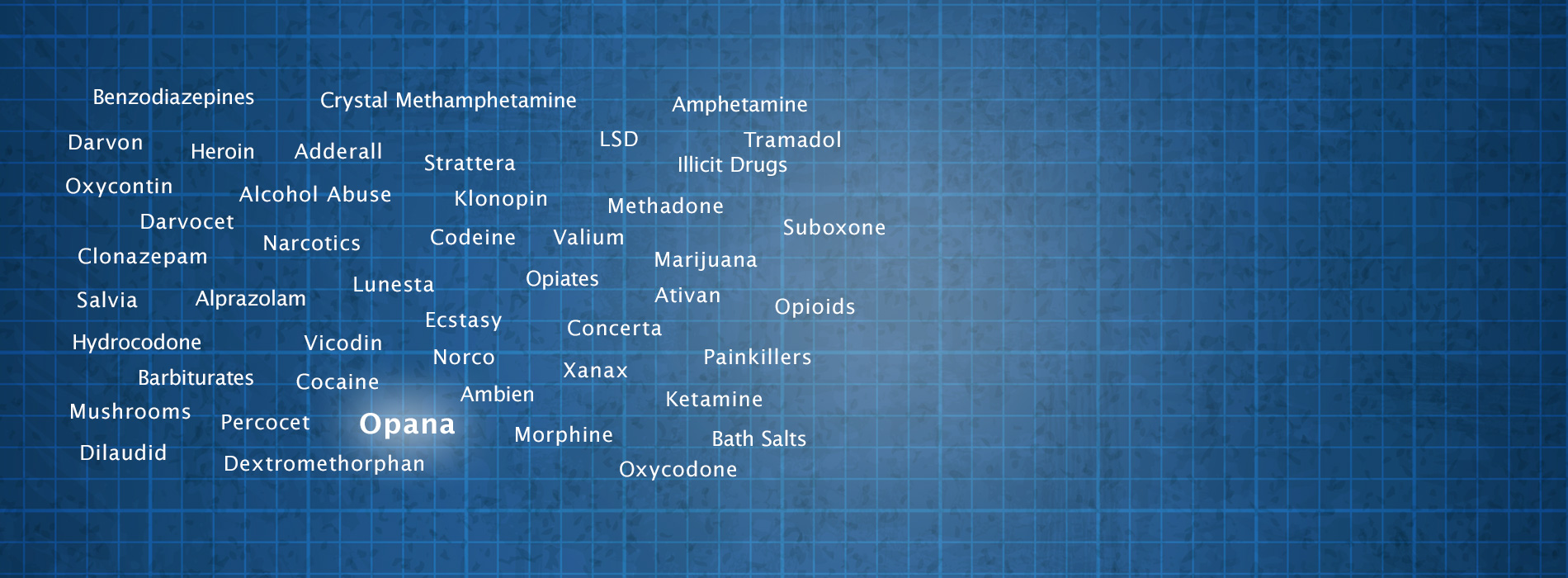Opana
Opiate abuse and addiction cost Americans more than $480 billion each year, according to statistics from the National Institute on Drug Abuse. These substances contribute to unnecessary healthcare costs, abuse of the healthcare system, car accidents, lost wages, criminal justice system costs, and crime. Opiate use and addiction is lined to around 50 percent of crime in the U.S., and many homicides and assaults occur when people are under opiate influence. In 2009, a survey found that over 600,000 people in the U.S. had abused an opiate during the previous year.Opana, also known as oxymorphone, is a synthetic opioid analgesic. This drug is used to manage moderate to severe pain, and to maintain anesthesia and reduce anxiety preoperatively. It is sold illicitly on the street in pill form and extended release (XR) formula. Opana works by acting directly on the central nervous system to produce euphoric effects. Acting on opioid receptors in certain areas of the brain and spinal cord, Opana disrupts normal brain chemistry and affects certain neurotransmitters to provide an analgesic “high.”
Addiction Signs and Symptoms
Prolonged use of Opana leads to tolerance, addiction, and dependency. This drug alters brain chemicals, which makes it difficult for a person to stop using. This is why it is a scheduled drug by the Drug Enforcement Agency. Opana is often used by people who experiment for recreational reasons, so overdoses are frequently reported. Those who develop full-blow addiction will struggle with devastating consequences and risk overdose. Symptoms and signs of Opana addiction include:
- Buying narcotics to supplement your prescription.
- Getting prescriptions from numerous doctors.
- Crushing pills before taking them.
- Drinking and abusing other drugs along with Opana.
- Faking injuries and illnesses to get more narcotics.
- Friends and family tell you that you need help.
- Seeking and using the drug occupies all your time.
With increased dose of Opana, there is an increased risk of overdose, side effects, and addiction. A person develops a tolerance to narcotics, which means more and more of the substance is required to achieve the desired effect. A person who uses drugs has withdrawal symptoms when he or she is out of the substance. These include:
- Nausea and vomiting
- Sweating
- Fever
- Bone pain
- Muscle aches and spasms
- Respiratory difficulties
- Changes in blood pressure and heart rate
- Tremors, twitches, and convulsions
Overdose Risks
According to the Centers for Disease Control and Prevention (CDC), certain groups are at increased risk of overdose. These groups include:
- Low-income individuals who are on Medicaid are twice likely than non-Medicaid patients to overdose.
- People who participate in doctor shopping.
- People with a mental illness.
- People who take high doses of opiates and misuse prescriptions.
- People with a history of substance abuse.
Detoxification
Detoxification (detox) is the process of purifying the body of all narcotics. This is done at a rehabilitation (rehab) center. When a person becomes addicted to Opana, or other narcotics, he or she can attend a rehab program and receive inpatient care and detox. The medical personnel will use certain medications to help with this process. Methadone, buprenorphine, and naltrexone are used to combat and counteract the withdrawal effects. Once you are over the withdrawal symptoms, the substance abuse professionals can counsel and instruct you on repair of the psychological and physical damage the drug has caused.

